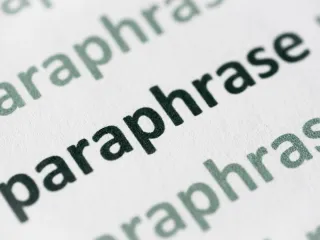The key to an impactful research paper is crafting an effective conclusion. The conclusion provides a final opportunity to make a lasting impression on the reader by providing a powerful summary of the main argument and key findings.
A well-written conclusion not only summarizes your research but also ties everything back to your thesis statement. Plus, it provides important takeaways for your reader, highlighting what they should remember from your research and how it contributes to the larger academic discourse.
Crafting an impactful conclusion can be tricky, especially in argumentative papers. However, with our expert tips and tricks, you can rest assured that your conclusion will effectively restate the main argument and thesis statement in a way that resonates with your audience and elevates your research to new heights.
Why is a Conclusion Necessary for a Research Paper?
The conclusion of a research paper is essential in tying together the different parts of the paper and offering a final perspective on the topic. It reinforces the main idea or argument presented and summarizes the key points and findings of the research, highlighting its significance.
Additionally, the conclusion creates a full circle of the research by connecting back to the thesis statement presented at the paper’s beginning. It provides an opportunity to showcase the writer’s critical thinking skills by demonstrating how the research supports the main argument.
The conclusion is essential for a research paper because it provides closure for the reader. It serves as a final destination that helps the reader understand how all the different pieces of information fit together to support the main argument presented. It also offers insights into how the research can inform future studies and contribute to the larger academic discourse.
It also ensures that the reader does not get lost in the vast amount of information presented in the paper by providing a concise and coherent summary of the entire research. Additionally, it helps the reader identify the paper’s main takeaway and understand how the research contributes to the larger body of knowledge in the field.
Leave a Lasting Impression
A well-crafted conclusion is an essential element of any research paper. Its purpose is to leave a lasting impression on the reader and tie together the different parts of the paper.
To achieve this goal, a conclusion should summarize the main points and highlight the key findings of the research. By doing so, the reader can easily understand the focus and significance of the study.
A strong conclusion should also discuss any important findings that can be applied in the real world. This practical perspective gives readers a better sense of the impact and relevance of the research.
Summarize Your Thoughts
The conclusion of a research paper should be concise and provide a summary of the writer’s thoughts and ideas about the research.
It should go beyond simply restating the main points and findings and address the “so what” of the research by explaining how it contributes to the existing body of knowledge on the same topic. This way, the conclusion can give readers a better understanding of the research’s significance and relevance to the broader academic community.
Demonstrate How Important Your Idea Is
Moving beyond a superficial overview and delving into the research in-depth is crucial to create a compelling conclusion. This entails summarizing the key findings of the study, highlighting its main contributions to the field, and placing the results in a broader context. Additionally, it would help if you comprehensively analyzed your work and its implications, underscoring its value to the broader academic community.
New Insights
The conclusion section of a research paper offers an opportunity for the writer to present new insights and approaches to addressing the research problem.
Whether the research outcome is positive or negative, the conclusion provides a platform to discuss practical implications beyond the scope of the research paper. This discussion can help readers understand the potential impact of the research on the broader field and its significance for future research endeavors.
How to Write a Killer Conclusion with Key Points
When writing a conclusion for a research paper, it is important to cover several key points to create a solid and effective conclusion.
Restate the Thesis
When crafting a conclusion, restating the thesis statement is an important step that reminds readers of the research paper’s central focus. However, it should not be a verbatim repetition of the introduction.
By restating the thesis concisely and clearly, you can effectively tie together the main ideas discussed in the body of the paper and emphasize the significance of the research question. However, keep in mind that the restated thesis should capture the essence of the paper and leave the reader with a clear understanding of the main topic and its importance.
Summarize the Main Points
To write an impactful conclusion, summarizing the main points discussed in the body of the paper is essential. This final section provides the writer with a last opportunity to highlight the significance of their research findings.
However, it is equally important to avoid reiterating information already discussed in the body of the paper. Instead, you should synthesize and summarize the most significant points to emphasize the key findings. By doing so, the conclusion can effectively tie together the research findings and provide a clear understanding of the importance of the research topic.
Discuss the Results or Findings
The next step is to discuss the results or findings of the research. The discussion of the results or findings should not simply be a repetition of the information presented in the body of the paper.
Instead, it should provide a more in-depth analysis of the significance of the findings. This can involve explaining why the findings are important, what they mean in the context of the research question, and how they contribute to the field or area of study.
Additionally, it’s crucial to address any limitations or weaknesses of the study in this section. This can provide a more balanced and nuanced understanding of the research and its implications. By doing so, the reader will have a better understanding of the scope and context of the study, which can ultimately enhance the credibility and validity of the research.
Ruminate on Your Thoughts
The final step to crafting an effective conclusion is to ruminate on your thoughts. This provides an opportunity to reflect on the meaning of the research and leaves the reader with something to ponder. Remember, the concluding paragraph should not introduce new information but rather summarize and reflect on the critical points made in the paper.
Furthermore, the conclusion should be integrated into the paper rather than presented as a separate section. It should provide a concise overview of the main findings and suggest avenues for further research.
Different Types of Conclusions
There are various types of conclusions that can be employed to conclude a research paper effectively, depending on the research questions and topic being investigated.
Summarizing
Summarizing conclusions are frequently used to wrap up a research paper effectively. They restate the thesis statement and provide a brief overview of the main findings and outcomes of the research. This type of conclusion serves as a reminder to the reader of the key points discussed throughout the paper and emphasizes the significance of the research topic.
To be effective, summarizing conclusions should be concise and to the point, avoiding any new information not previously discussed in the body of the paper. Moreover, they are particularly useful when there is a clear and direct answer to the research question. This allows you to summarize your findings succinctly and leave the reader with a clear understanding of the implications of the research.
Externalizing
On the opposite end of the spectrum are externalizing conclusions. Unlike summarizing conclusions, externalizing conclusions introduce new ideas that may not be directly related to the research findings. This type of conclusion can be beneficial because it broadens the scope of the research topic and can lead to new insights and directions for future research.
By presenting new ideas, externalizing conclusions can challenge conventional thinking in the field and open up new avenues for exploration. This approach is instrumental in fields where research is ongoing, and new ideas and approaches are constantly being developed.
Editorial
Editorial conclusions are a type of conclusion that allows the writer to express their commentary on the research findings. They can be particularly effective in connecting the writer’s insights with the research conducted and can offer a unique perspective on the research topic. Adding a personal touch to the conclusion can help engage the reader and leave a lasting impression.
Remember that regardless of the type of conclusion you choose, it should always start with a clear and concise restatement of the thesis statement, followed by a summary of the main findings in the body paragraphs. The first sentence of the conclusion should be impactful and attention-grabbing to make a strong impression on the reader.
What to Avoid in Your Conclusion
When crafting your conclusion, it’s essential to keep in mind several key points to ensure that it is effective and well-received by your audience:
- Avoid introducing new ideas or topics that have not been covered in the body of your paper.
- Refrain from simply restating what has already been said in your paper without adding new insights or analysis.
- Do not apologize for any shortcomings or limitations of your research, as this can undermine the importance of your findings.
- Avoid using overly emotional or flowery language, as it can detract from the professionalism and objectivity of the research.
- Lastly, avoid any examples of plagiarism. Be sure to properly cite any sources you have used in your research and writing.
Example of a Bad Conclusion
- Recapitulation without Insight: In conclusion, this paper has discussed the importance of exercise for physical and mental health. We hope this paper has been helpful to you and encourages you to start exercising today.
- Introduction of New Ideas: In conclusion, we have discussed the benefits of exercise and how it can improve physical and mental health. Additionally, we have highlighted the benefits of a plant-based diet and the importance of getting enough sleep for overall well-being.
- Emotional Language: In conclusion, exercise is good for your body and mind, and you should definitely start working out today!
Example of a Good Conclusion
- Insights and Implications: In light of our investigation, it is evident that regular exercise is undeniably beneficial for both physical and mental well-being, especially if performed at an appropriate duration and frequency. These findings hold significant implications for public health policies and personal wellness decisions.
- Limitations and Future Directions: While our investigation has shed light on the benefits of exercise, our study is not without limitations. Future research can delve deeper into the long-term effects of exercise on mental health and explore the impact of exercise on specific populations, such as older adults or individuals with chronic health conditions.
- Call to Action: In conclusion, we urge individuals to prioritize exercise as a critical component of their daily routine. By making exercise a habit, we can reap the many benefits of a healthy and active lifestyle.
Final Thoughts
When writing a research paper, the conclusion is one of the most crucial elements to leave a lasting impression on the reader. It should effectively summarize the research and provide valuable insights, leaving the reader with something to ponder.
To accomplish this, it is essential to include vital elements, such as restating the thesis, summarizing the main points, and discussing the findings. However, it is equally important to avoid common mistakes that can undermine the effectiveness of the conclusion, such as introducing new information or repeating the introduction.
So to ensure that your research is of the highest quality, it’s crucial to use proper citations and conduct a thorough literature review. Additionally, it is crucial to proofread the work to eliminate any errors.
Fortunately, there are many available resources to help you with both writing and plagiarism prevention. Quetext, for example, offers a plagiarism checker, citation assistance, and proofreading tools to ensure the writing is top-notch. By incorporating these tips and using available resources, you can create a compelling and memorable conclusion for readers.









